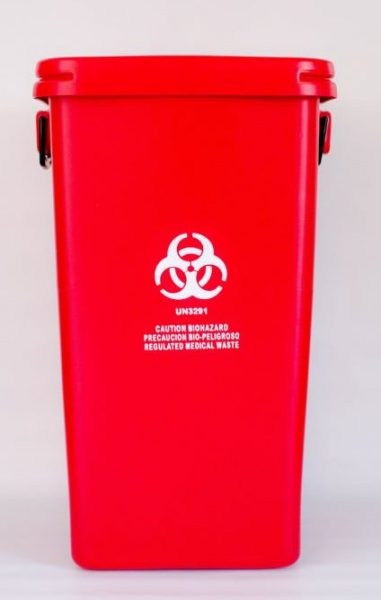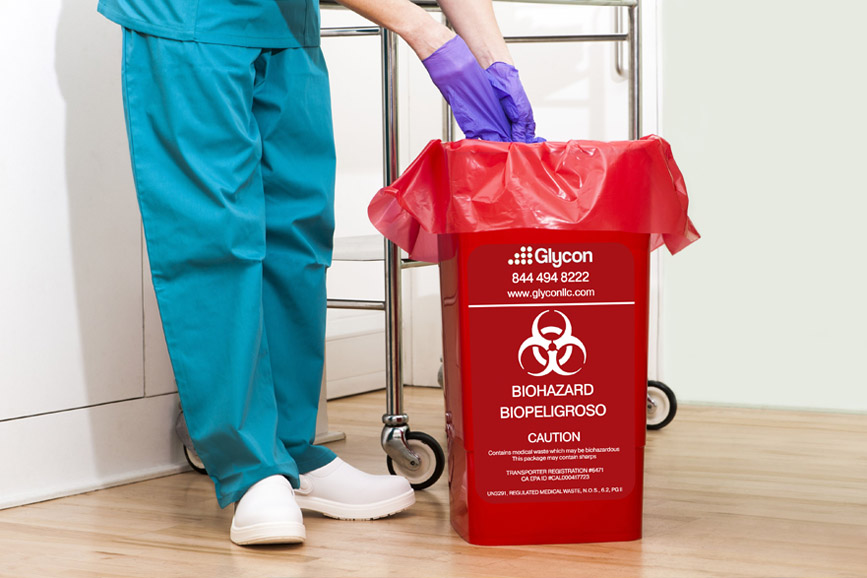Defending Health: Unveiling the Significance of Expert Medical Waste Removal
Defending Health: Unveiling the Significance of Expert Medical Waste Removal
Blog Article
Remain Ahead of Regulations: Professional Suggestions on Medical Waste Disposal
In a globe where the healthcare sector is constantly developing, it is crucial for medical facilities to remain ahead of laws when it pertains to the proper disposal of medical waste. With strict guidelines and regular regulatory modifications, it can be challenging to browse the complexities of this procedure. Nonetheless, with experienced recommendations, facilities can ensure conformity and mitigate dangers connected with improper garbage disposal. From understanding the different classifications of clinical waste to executing the best collection and partition approaches, this discussion will certainly give workable ideas and important understandings to aid facilities remain in advance of policies in the ever-changing landscape of medical garbage disposal.
Recognizing Clinical Waste Categories
Recognizing clinical waste groups is essential for proper disposal and administration in healthcare facilities. Clinical waste refers to any type of waste created by medical care tasks that may position a risk to public health or the environment. It is crucial to classify clinical waste precisely to ensure its secure handling, therapy, disposal, and transport.
There are numerous groups of medical waste that health care centers require to be knowledgeable about. One of the most usual groups consist of contagious waste, pathological waste, sharps waste, pharmaceutical waste, and chemical waste. Each group has specific standards and guidelines for its proper administration and disposal.
Pathological waste refers to human cells, body organs, or body parts that require special handling and disposal. Pharmaceutical waste makes up ended, extra, or polluted medicines that need cautious handling and disposal.
Staying Up-To-Date With Regulatory Changes
Staying present with governing changes is vital for healthcare centers to guarantee compliance and proper management of clinical garbage disposal. medical waste removal service. With regulations regularly advancing, it is crucial for medical care facilities to stay up-to-date to prevent penalties, penalties, and prospective harm to the environment and public health and wellness
To remain ahead of regulative adjustments, medical care facilities should develop a system for monitoring and monitoring updates. This can be done by subscribing to governing newsletters, attending workshops and meetings, and actively getting involved in market associations. Additionally, centers ought to designate a team participant or team in charge of remaining informed and sharing info to pertinent stakeholders.
Normal interaction with regulatory agencies is also essential. Healthcare centers need to develop relationships with regional, state, and federal firms to guarantee they understand any kind of modifications in regulations that might influence their waste management techniques. This can be done through regular meetings, engagement in public remark durations, and positive engagement with governing firms.
Furthermore, health care centers need to think about partnering with waste management companies that focus on medical garbage disposal (medical waste disposal services with WasteX). These firms are often skilled in the most recent regulations and can give advice and assistance to make sure conformity
Applying Proper Collection and Partition Methods
To effectively take care of medical waste disposal, medical care facilities have to develop appropriate collection and segregation methods in conformity with regulative standards. Carrying out these methods guarantees the secure handling and disposal of potentially dangerous materials, secures the atmosphere, and decreases the threat of infections and injuries to healthcare workers and the basic public.
Correct collection and partition methods entail using assigned containers and classifying systems. Health care centers must offer plainly labeled containers for various sorts of clinical waste, such as sharps, transmittable waste, pharmaceutical waste, and non-hazardous waste. These containers need to be color-coded and clearly marked to prevent confusion and promote simple identification.
Furthermore, healthcare facilities should educate their team on the appropriate procedures for collecting and segregating medical waste. This includes educating them on the various types of waste, the suitable containers to make use of, and the significance of following regulations and guidelines. Regular training sessions and correspondence course need to be carried out to make certain that employee continue to be updated on best practices.
Additionally, health care facilities ought to establish a system for regular collection and disposal of medical waste. This may entail partnering with accredited waste management firms that focus on medical waste disposal. These companies will certainly make sure that the gathered waste is delivered and dealt with in conformity with governing requirements.
Picking the Right Disposal Techniques

Incineration is just one of one of the most common and reliable methods for throwing away particular types of clinical waste, such as pathological waste and sharps. It entails the regulated burning of waste at high temperature levels, minimizing it to ash. Incineration can launch unsafe pollutants right into the air and add to air pollution.

Other disposal approaches include chemical therapy, microwave therapy, and landfilling. Chemical treatment entails making use of chemicals to neutralize why not check here the waste and decontaminate. Microwave therapy utilizes microwave energy to heat and disinfect the waste. Landfilling entails hiding the waste in an assigned landfill area (medical waste disposal services with WasteX). Landfilling must be the last resort due to the potential danger of contamination to soil and groundwater.
Making Certain Conformity With Paperwork and Training
After carefully taking into consideration the proper disposal approaches for medical waste, healthcare centers should make sure compliance with policies and minimize ecological influence by executing efficient documentation and training treatments. This action is vital in preserving a lasting and safe setting for both healthcare workers and the basic public.

Training is just as crucial in making certain compliance with policies. Healthcare workers that deal with medical waste ought to receive appropriate training on click for more waste partition, handling, and disposal procedures. This training must cover subjects such as the correct use individual protective equipment, recognition of various kinds of waste, and the appropriate disposal approaches for every waste classification. By supplying extensive training, health care facilities can equip their team to make informed decisions and minimize the threat of improper waste disposal.
Verdict
In final thought, staying ahead of regulations in clinical waste disposal is critical for health care facilities. medical waste removal service. Comprehending the different classifications of medical waste, staying updated with regulatory adjustments, carrying out appropriate collection and medical waste disposal services with WasteX segregation methods, selecting the ideal disposal methods, and ensuring compliance with paperwork and training are all crucial steps. By adhering to these standards, health care organizations can properly handle and dispose of clinical waste in a responsible and secure fashion
From recognizing the various categories of medical waste to executing the best collection and partition techniques, this discussion will offer actionable pointers and beneficial insights to assist centers remain in advance of laws in the ever-changing landscape of medical waste disposal. - medical waste disposal services with WasteX
The most common categories include infectious waste, pathological waste, sharps waste, pharmaceutical waste, and chemical waste. Medical care centers ought to give clearly classified containers for different types of medical waste, such as sharps, infectious waste, pharmaceutical waste, and non-hazardous waste. Healthcare centers must develop a detailed system to videotape and track all aspects of medical waste disposal, consisting of types of waste generated, quantities, and disposal approaches utilized. Health care employees who handle clinical waste should receive appropriate training on waste partition, dealing with, and disposal procedures.
Report this page